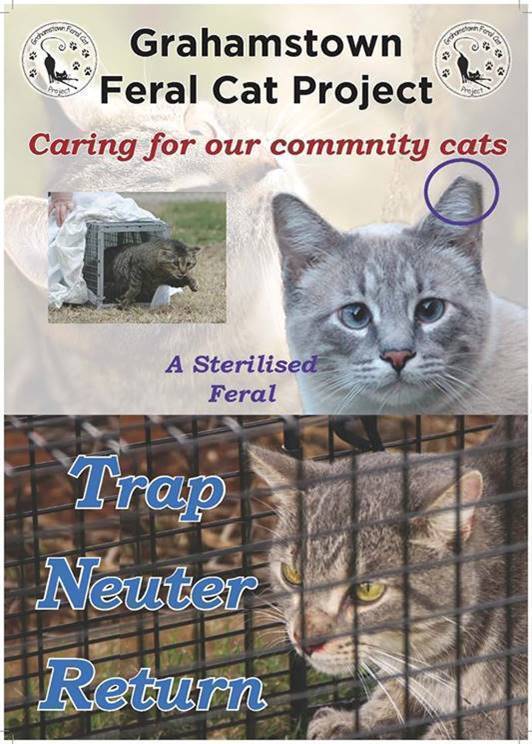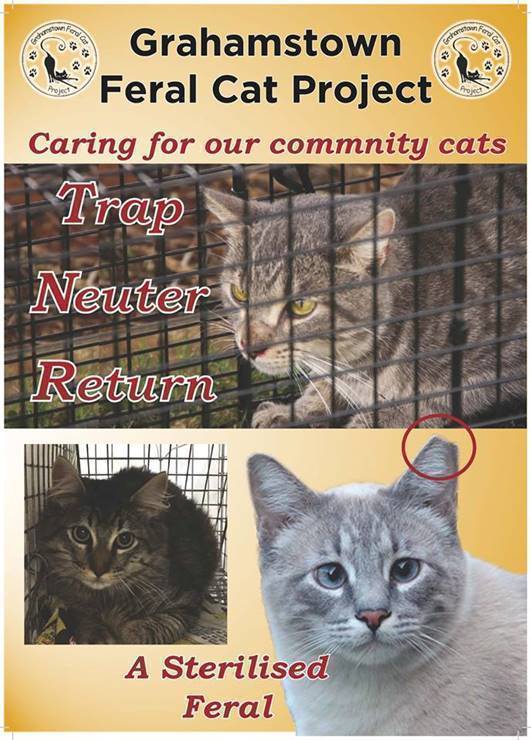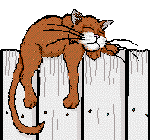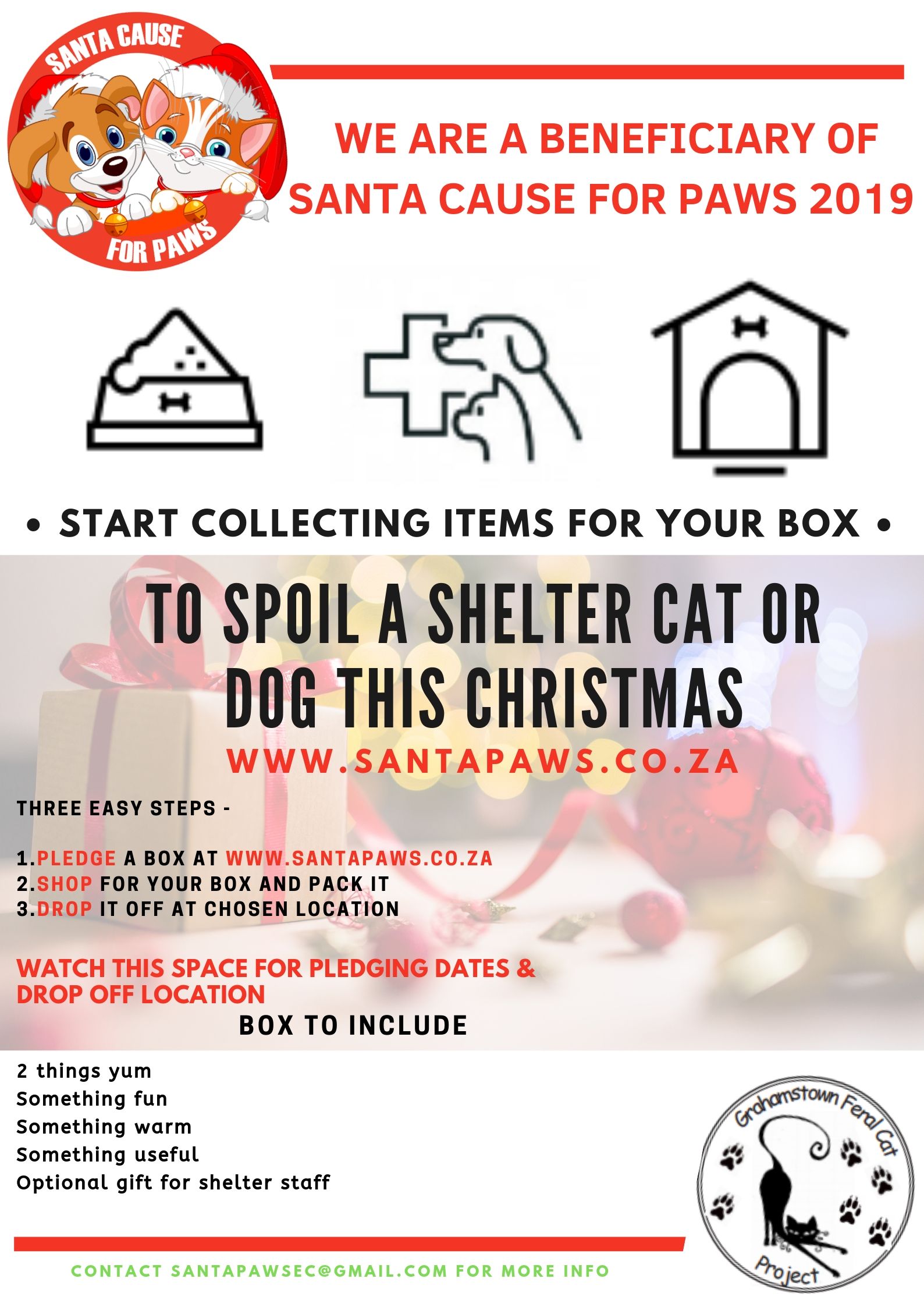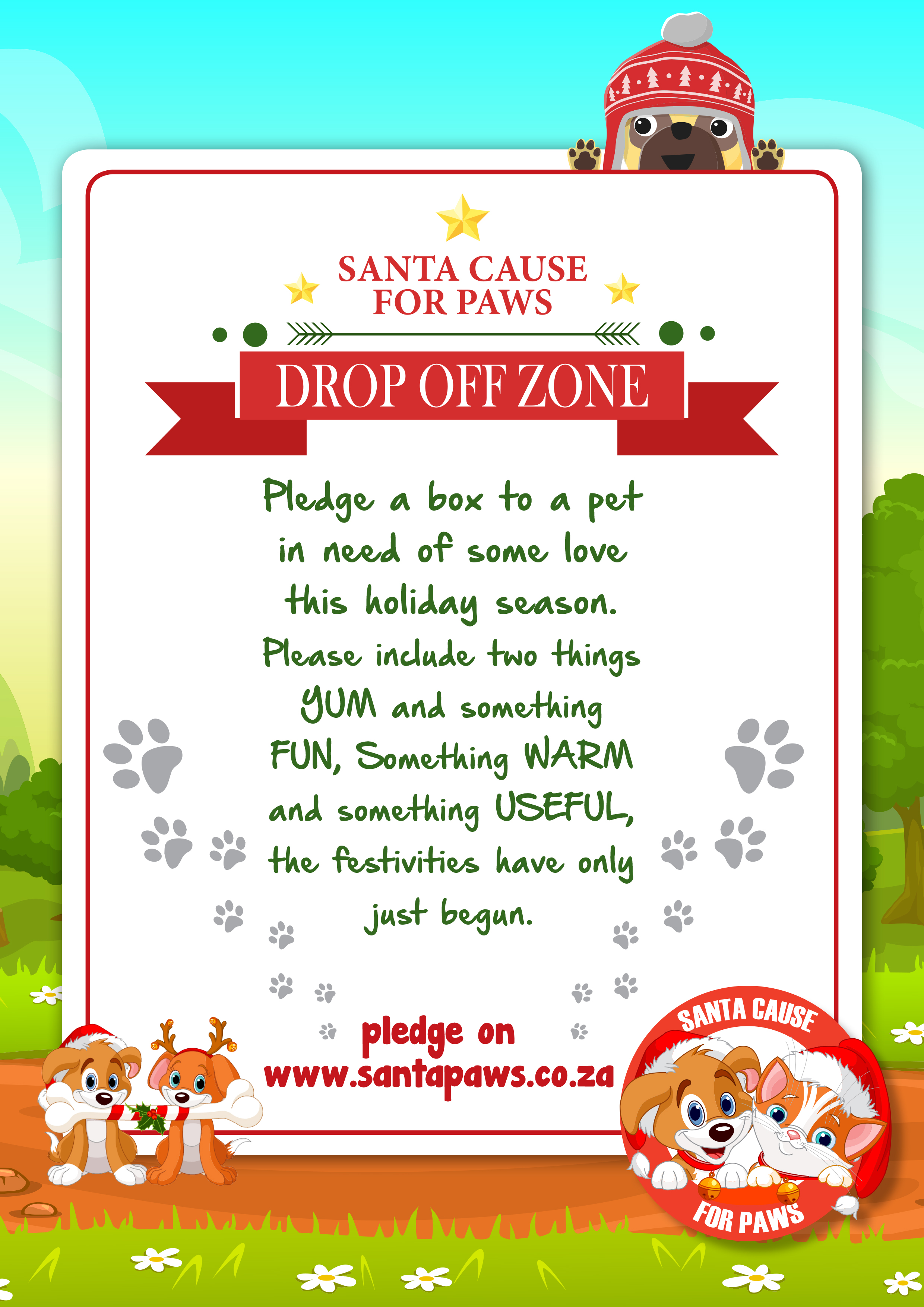September 2019
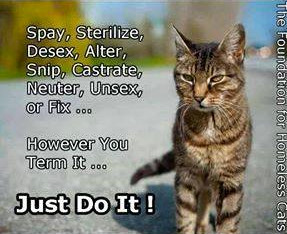
Looking Back
On 1 October it was our 10th anniversary! Lorna, with a bit of input from me, looks back…
EARLY BEGINNINGS
I suppose it isn’t all that uncommon in life that when one door closes, another one will open. In August 2009, I had just said sad farewells to the last old girl of a feral cat colony I had been looking after for 17 years and decided this would be a good time to quit and focus on my own large animal family. I was tired and sad - animal rescue can take a heavy toll on one's personal life, if you are not careful. All the years I had tried on my own and at my own expense to trap and sterilize as many cats as I could, and now it was enough. However, just then I was asked to help with some feral cats at Peppergrove Mall - I said sorry, but no. A few days later Natalia Kavalenia called me to ask for advice on trapping cats and kittens behind Checkers and I weakened and was in again.
This time we went public and asked for donations to assist with sterilization costs, as well as emailing a more-or-less monthly newsletter. Going public was tough at first because people had their own ideas about managing feral colonies - many demanded that we come and remove ferals living on their properties and when I refused and explained that TNR is the only humane way to manage them, and that there are no sanctuaries that could possibly accommodate all of them, some said they would then kill the cats themselves to which I had to sadly reply that they would then have to live with that. To my horror, another former rescue worker offered to help to control population numbers by giving trapped cats lethal injection. I knew I would never be able to live with killing healthy cats and kittens whose only 'crime' was having been born.
However, more and more people were getting the message and setting up little feeding stations in their gardens for resident ferals - and just thinking differently about them.
Sadly, after just a year, Natalia announced that she would be leaving Grahamstown, and I knew I really couldn't manage much more on my own. It was then that, to my great surprise and relief, Lynne Grant, a friend and co-worker, generously offered to take over, with the support of her husband, Malcolm. Lynne had no experience with cats, but she didn't let that get in the way of her efforts to learn the ropes. There were many bumps along the way, but we have come a long way now and it is wonderful to see how our little project has grown and earned the respect of our community.
There is now quite a network of volunteers and regular supporters - too many to mention, really, but a few stand out without whose hard work we might not have made it - Vivienne Botha, Mary Bowker, Lorraine Richardson, Tracy Jeffery and Emma Martin as well as so many others - who helped a good deal with fundraising, because animal rescue does NOT come free!
From the beginning our mission was merely to TNR but soon we were faced with tiny kittens who had, for one reason or another, been removed or become separated from their mothers.
One of Lynne’s first challenges was to foster two tiny boys whose eyes were not yet open – no mean feat when one considers she has no children of her own.
It goes without saying that Zuzu and Apollo became foster fails and 8½ years later still rule the roost!
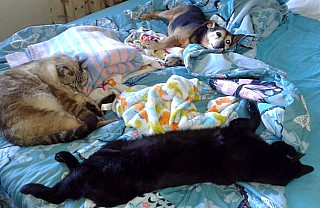
Zuzu and Apollo with their sister Milo
|
|
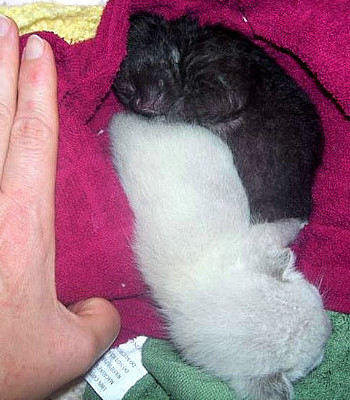
Zuzu and Apollo |
So, slowly, a fostering network was built up and we could never have managed the time and patience needed to care intensively for tiny babies without our super foster moms, Griet Wood and Caren Lewis, who have been with us from the beginning (and have also foster-failed a few times). As our reputation has grown, many more people have volunteered their time and energies with fundraising, fostering and trapping, for which we are most grateful. We could not manage what we do without this support base.
Some of the very first of our feral babies to be adopted ten years ago are featured in these photographs.

My niece adopted the tortoiseshell kitten she named Tiger-Lily.
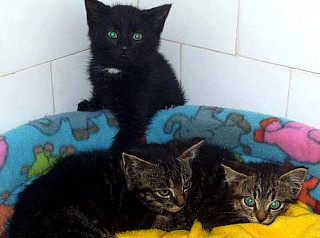
|
|
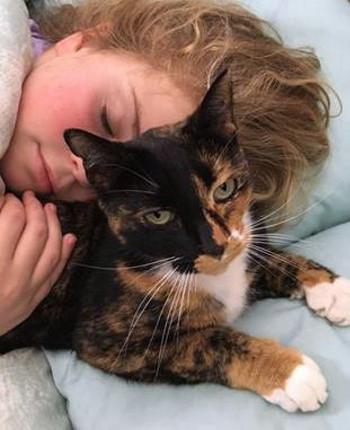
Viv and Ted Botha adopted Spike (tabby).
I added Morrie (tabby) to my own feline family, and Brian Kemp adopted Sooty. |
Many of those kittens were still pretty wild when adopted, but these days most kittens up for adoption are well socialised and healthy, thanks to the love and patient care of our foster families.
I felt immense satisfaction when friends who had recently attended a talk given at U3A by the Grahamstown SPCA vet, Dr Amy, couldn't wait to tell me that she had stated that this year she had not had to euthanize any cats due to overcrowding at our SPCA, except for a very few cats too badly injured or sick to be saved. She attributed this happy state of affairs to the work done by the Grahamstown Feral Cat Project in stemming the tide with the TNR work done by us. We are acutely aware that this does not mean our work here is done, but it does show that our efforts have made a significant difference to the lives of the community cats of our town. And that valuable work cannot be done without your support, so please do continue with us on this journey.
Lorna (mainly) and Lynne |
TNR
Spays: 16
Neuters: 3
In the period 1 December 2018 to 30 September 2019 (includes kittens adopted through us):
Spays: 71
Neuters: 72
FROM TARRYN: SPCA SPAY DAY
We were delighted to get on board with the SPCA’s epic Spay Day on 14 September. We focused our efforts on a farm with a feral colony that the SPCA had identified, firstly conducting a site visit with the SPCA to determine exactly how many cats there were, where they were, and what their routine was. Our visit revealed that the feral colony lived deep in the bushes, and popped their heads out only occasionally and somewhat randomly, for quick sneak arounds for food scraps. We realised we would need to establish a routine with them if we were to have any trapping success so, with food donated to the SPCA for Spay Day, the farm’s staff happily agreed to set up feeding stations at four different points along the bush line, and put food out twice a day at the same times each day. By doing so, we hoped the shy cats would get used to visiting those particular spots regularly.
On the Friday afternoon before Spay Day, Lynne, Kate and I set off with boots full to the brim with clanking traps, carriers, blankets, newspaper and plenty of pilchards – our cat-catching arsenal! Kate and Lynne also packed a very necessary patience-sustaining stash of biscuits and flasks of coffee. We were warmly greeted at the farm, with smiles and gifts of local produce, and directed to the feeding stations. Already a whiskered face was watching us from the bushes.
That evening, three feral cats entered the traps and we popped a single friendly one into a carrier. They spent the night safe and warm at Lynne’s house and, first thing on Saturday morning, Lynne and Caren took them to Ikhala Veterinary Clinic where the sterilisations were being done, as Kate and I headed back to the farm to re-set the traps and pick up some other friendlies. Luck was on our side, and two friendly female cats, cute as buttons, were easily popped into carriers, followed shortly by a tell-tale snap of a trap shutting.
In total, seven cats from the farm were sterilised on Spay Day – five females (two of whom were pregnant) and two males. We followed up a few days later, transporting two other friendly cats to and from the SPCA for sterilisation. As far as we can tell, only two cats remain to be done. One is a friendly but elusive male, who was clearly gossiping with his friends, and quickly figured out what we were up to, and has been keeping a low profile ever since. His dad has a carrier and our number, and is going to call us as soon as he is able to get his cat closed in the house. His dad is also keeping a keen eye open for any unclipped ears of shy cats prowling the bushes nearby. The second cat is on a neighbouring property. She currently has very young kittens who still need to be with their mum, but are in good health. When they are old enough, we will take them into foster care, to go up for adoption, and sterilise and return the mum.
We are so impressed with our local SPCA for organising such a spectacularly successful Spay Day, and we are grateful to them for inviting us to be a part of it. Well done and thank you to the entire team.
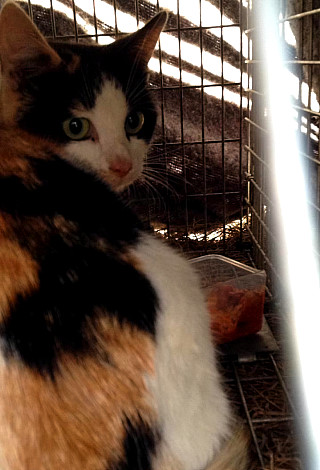
We also thank the owners and staff of the farm we attended to, for their openness to TNR, for their role in establishing the routine with the feral cats, and for allowing us to come in and out as we needed to. This kind of cooperation and compassion for the wellbeing of the cats makes all the difference. |
|
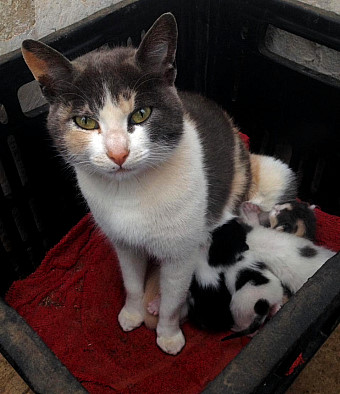
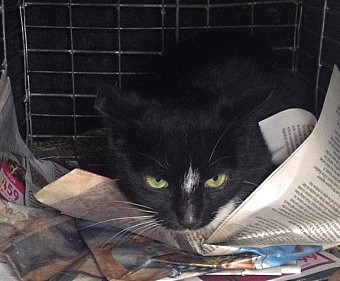
|
|
A feral momcat at one of our colonies has ignored our traps for a very long time. Despite heroic efforts and every kind of bribery from Lynne, Tarryn, Isabelle, Nico and Neville she studiously evaded capture and every year - sometimes twice a year - presented us with beautiful kittens. Most times we were able to take these into foster care while they were still young, thus allowing us to get them adopted out, but sometimes she hid them so well that by the time they finally made their appearance they could only be TNRd. Recently she disappeared for a few weeks and I will confess that in my madness part of me hoped that she had moved on permanently or suffered some misadventure. However, a week or two ago she re-appeared, sporting an extremely rounded belly. Yesterday Nico and Neville decided “enough is enough” and tranquilised her, threw a blanket over her and got her into the trap. She spent the night at the vet and today Dr Clayton spay-aborted her.
While we are sad that the kittens will not have a chance at life, the reality is that we often battle to home our foster kittens and there are just not enough homes for all the unwanted kittens and puppies being born, never mind the adults in shelters. Fred and George are two kittens from her last litter who are still looking for a home and have had no interest shown in them. It has also been found that kittens from later litters are likely to be unhealthy. As in, the more litters a mum has, the unhealthier the kittens can be, because mum is weakened by constant pregnancy. We have been very concerned about the strain this mum has been under with constant pregnancies, and would’ve been worried about the well-being of her kittens had she given birth in a hidden and inaccessible corner yet again. Now, our momcat can live her life without any further demands on her and we can concentrate our efforts on the other ferals out there.
Without the help of our supporters, we cannot continue our work - please, keep donating. Not a cent will be wasted and we still have colonies waiting to be attended to as well as kittens to be taken into foster care! All donations go straight into our account at the vet, so your money can only be used for sterilisations, food for foster kittens and medical attention for foster kittens and injured ferals.
Foster Kittens
STILL IN FOSTER WITH SHABNAM SHAIK
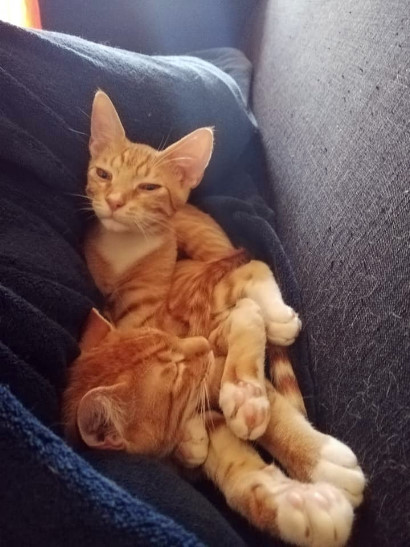
|
|
These gorgeous boys, Fred and George, are still looking for their forever homes. They are such sweethearts, love cuddles and playing, are attentive and love a good belly scratch. They do not have to be adopted together. The boys are going on six months, and still quite small and lean. They have both been neutered and are potty trained.
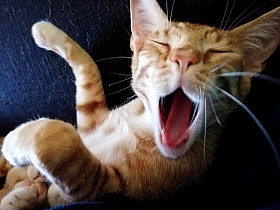
The adoption fee is R400 for one kitten and if both are adopted together, then R300 each. They have had their dewormer, first vac and rabies shot. A home-check will be done. If you are interested or know someone who is please contact Shabnam Shaik on 082 469 4129. We hope that their forever home is out there. With kitten season upon us, we really need to free up this foster home. |
Fundraising
Thanks so much to Lorraine for arranging our cash and food collection, our volunteers for giving up their time, and the public for donating so generously on Saturday. We took in the wonderful sum of R3297.50 which will be deposited into our account for TNR and food and meds for foster kittens or injured ferals.

We hope you have started collecting all the goodies for your boxes. Once again Hoof and Hound at Peppergrove Mall is a drop-off point and we thank Orren and Niki for taking on this vital task.
(Click an image for a large printable copy.)
Donations
(September 2019)
Thank you so much to everyone who donated.
Your support means so much to us and helps us to continue with our work.
Jo Fitzhenry
Jennifer Gon
Colleen Duffy
The Crazy Cookie
John and Joyce Stewart (Cat Cave)
Bev Moore
Cash and Food Collection
S Stretch
Anonymous
If making electronic payments please remember to include WILDCAT and your name as a reference so that we can thank you. Please email proof of payment to: l.grant@amazwi.museum
All donations go to sterilisation and food and medicines for fosters and ferals.
Occasionally there are costs for veterinary care of ferals who are ill or injured.
Spays – R500
(includes all pain meds and rabies vaccination)
(R550 if pregnant or on heat)
Neuters - R325
Consultations - R165
The adoption fee is R500, which includes first deworming and inoculation and obligatory sterilisation.
If you would like to donate any amount, please deposit into our vet account at:
The Grahamstown Veterinary Clinic,
Standard Bank Account No 282625054
Branch Code 050917
Please add the reference "W/CAT" and your name,
and please notify us if possible
so that we can follow up donations in case of
accidental misallocation
Please do not take any feral/stray cat into the vet for attention and charge it to our Wildcat account
without prior approval from Lynne.
The Wildcat account with the vet is meant for sterilisation of ferals and will only
under certain exceptional circumstances be used for other procedures.
About Us
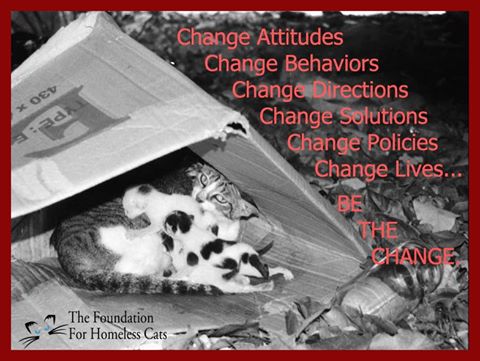
Grahamstown Feral Cat Project uses the TNR (Trap, Neuter & Return) approach - globally recognised as the most humane, least costly and most sustainable way of stabilizing feral cat populations.
Volunteers humanely trap the feral cats; we take them to the vet to be spayed or neutered; the tip of the right ear is snipped off so we can easily identify that they have been sterilised; we return them to their original territory where they live out their lives (adult ferals cannot be tamed). Feral kittens, wherever possible, are fostered, tamed and homed.
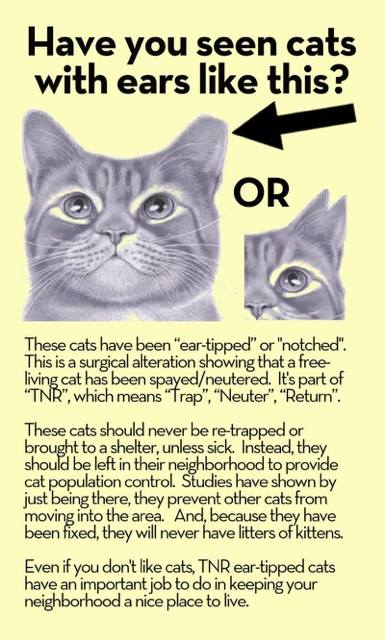
Archived Newsletters
January 2015
February 2015
March 2015
April 2015
May 2015
June 2015
July 2015
August 2015
September 2015
October 2015
November 2015
December 2015
January 2016
February 2016
September 2019
|







